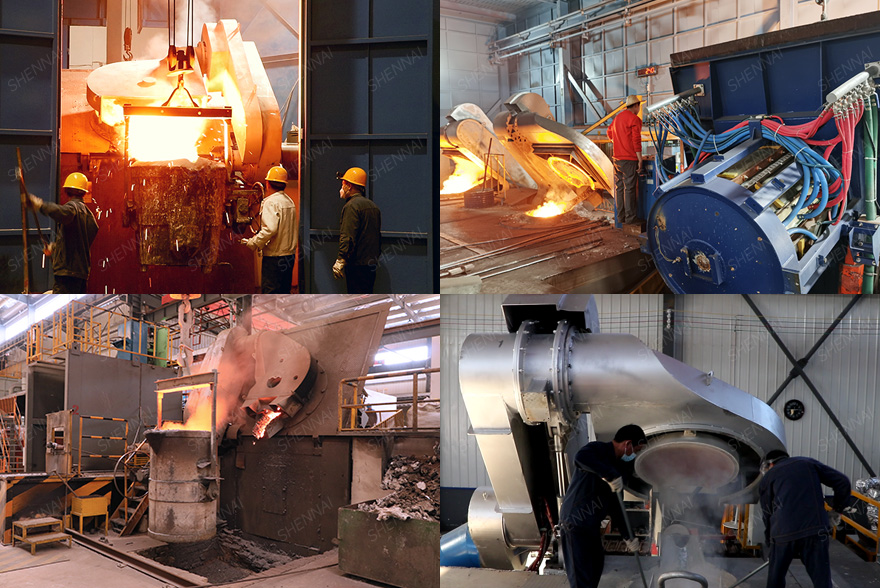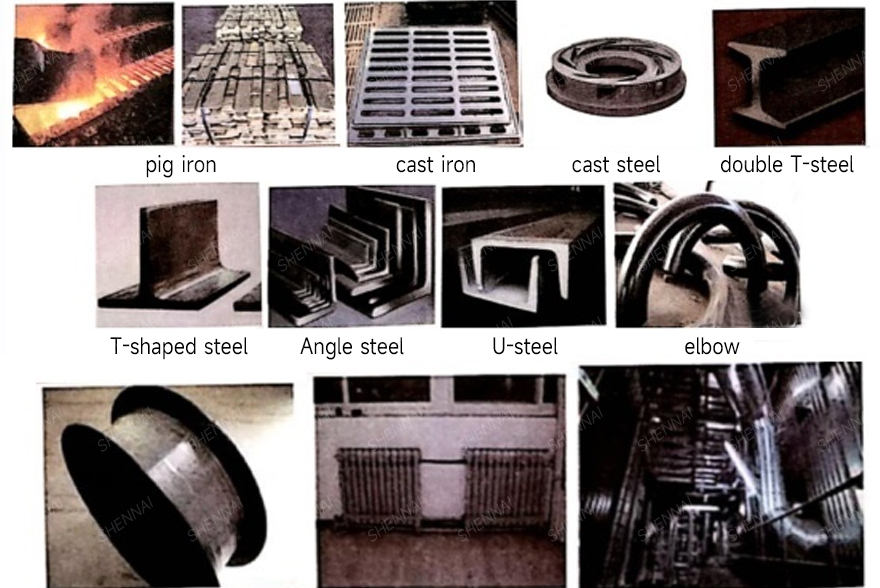- Tel:+8613007564317
- Email:[email protected]
News
Types and applications of ferrous metal materials


1.Types and applications of ferrous metal materials
(1)Material type of ferrous metal
Ferrous metal materials are divided into pig iron, steel, semi-finished products and final products. It can also be classified according to production process, shape, size and surface condition.
1)Pig iron
Pig iron for steelmaking, casting, nodular cast iron, wear-resistant iron, carbon-carbon low-phosphorus grain iron, vanadium-containing pig iron
2)Steel
① According to chemical composition: non-alloy steel, low-alloy steel, alloy steel
② Low-alloy steel is classified into ordinary low-alloy steel, high-quality low-alloy steel and special low-alloy steel according to the main quality grades
③ Alloy steel is classified according to the main quality grades: high-quality alloy steel and special alloy steel
3) Cast iron
When the trademark has alloy element symbol, the tensile strength value is arranged after the element symbol and the content, separated by -,
For example, the grade of wear-resistant ductile iron is QTM Mn8-30
4)Cast steel
Alloy cast steel is divided into heat-resistant cast steel, corrosion-resistant cast steel and wear-resistant cast steel
(2)Application of ferrous metal materials
1)Steel plate and steel pipe
Pipe material: building pipe material
Domestic sewage: cast iron pipe or non-pipe material (plastic pipe, concrete pipe)
Rainwater pipe: cast iron pipe, galvanized and non-galvanized steel pipe or non-metallic pipe
Indoor hot water supply system: galvanized steel pipe, steel pipe and non-metallic pipe
Indoor heating system: welded steel pipe and galvanized steel pipe
Outdoor domestic water supply pipe: galvanized pipe, water supply cast iron pipe, composite pipe or plastic pipe
Outdoor drainage pipes: drainage cast iron pipes and non-metallic pipes
Outdoor heating pipe network: pipe diameter ≤ 40mm, welded steel pipe; When the pipe diameter is 50~2000mm, welded steel pipe or seamless steel pipe; When the pipe diameter is more than 200rmm, spiral seam welded steel pipe
2)Section steel:
① According to the section size and shape range, the hot-rolled section steel is divided into: I-beam, channel steel, equilateral angle steel and unequal angle steel
② The surface of cold-formed section steel shall be free of cracks, scabs, folds, slag inclusions and end layer
Local pockmarks, scratches and other minor defects with depth not exceeding half of the thickness tolerance are allowed, but the minimum thickness at the defect of the section steel is guaranteed
3)Steel flange
① The available materials of steel flanges are: forgings, plates, castings, steel pipes
② The materials for steel flanges of petrochemical and pressure 1 vessels are: plates and forgings
4)Valves
The valve model consists of seven parts: valve type, driving mode, connecting hand type, structure type, sealing surface or lining material, pressure, valve body material, etc
2.Types and applications of non-ferrous metals
(1)Types of non-ferrous metals
Non-ferrous metal: a general term for all gold except iron, manganese and chromium
Aluminum, magnesium, titanium, copper, manganese, nickel, cobalt, zinc, tin, lead: cathode copper, aluminum ingot for remelting, zinc aluminum ingot, lead ingot, tin ingot, electrolytic nickel
(2)Non-ferrous metal application
Aluminum and aluminum alloy pipes
Container:
①Vessel production: atmospheric pressure vessels and pressure vessels with design pressure>8MPa
②Aluminum parts not prepared for air separation shall not contact with alkali solution
The Conduit:
①It can be used in pipeline systems such as cryogenic device, liquefaction device, air separation device and food refrigeration
②It can be used in the pipeline system that does not allow the medium polluted by iron ions
Copper and copper alloy: air separation: brass parts shall not contact ammonia
Nickel and nickel alloys: nickel and nickel base alloys in the steam environment 'The upper limit of the service temperature of nickel, nickel steel copper, nickel chromium iron, nickel iron chromium increases in turn
Titanium and titanium alloy: can produce atmospheric pressure vessels and pressure vessels with design pressure ≤ 35MPPa
Precious metals: gold, silver, platinum group metals
Others: lead, tin and their alloy pipes shall not use Class B fluid
We will get in touch with you as soon as possible
